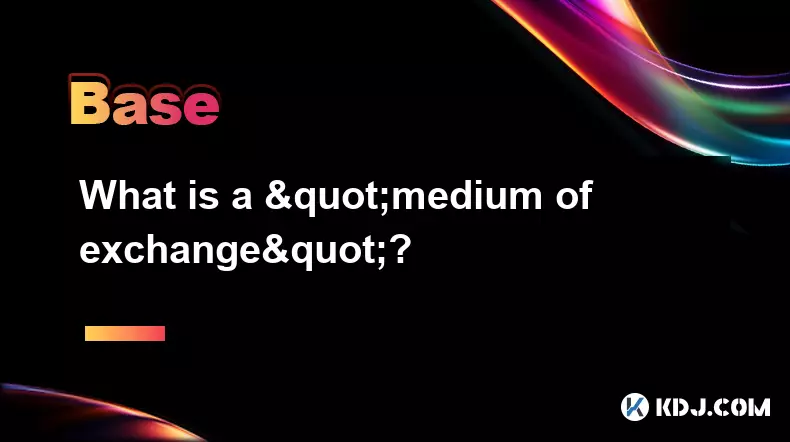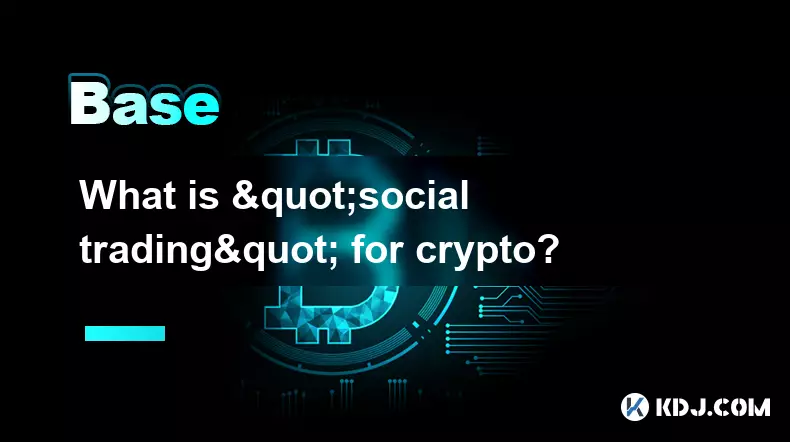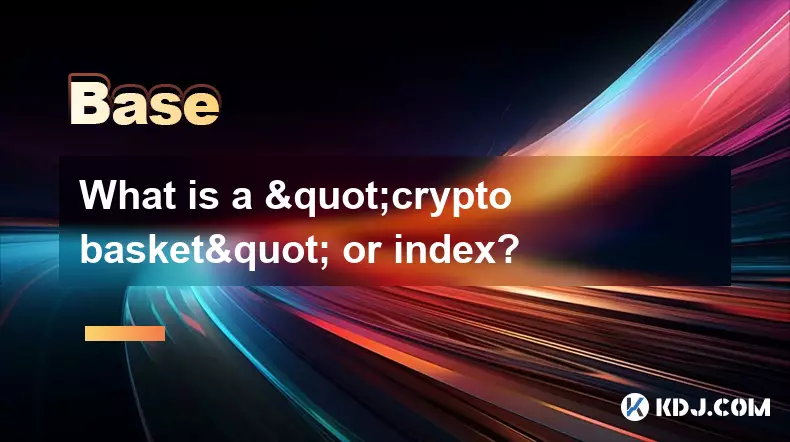-
 Bitcoin
Bitcoin $111500
0.05% -
 Ethereum
Ethereum $4439
1.69% -
 XRP
XRP $2.868
1.24% -
 Tether USDt
Tether USDt $1.000
-0.01% -
 BNB
BNB $859.0
1.00% -
 Solana
Solana $211.2
3.36% -
 USDC
USDC $0.9997
-0.03% -
 Dogecoin
Dogecoin $0.2177
2.23% -
 TRON
TRON $0.3403
0.32% -
 Cardano
Cardano $0.8351
1.20% -
 Chainlink
Chainlink $23.62
1.09% -
 Hyperliquid
Hyperliquid $45.59
1.56% -
 Ethena USDe
Ethena USDe $1.001
0.00% -
 Sui
Sui $3.368
2.46% -
 Bitcoin Cash
Bitcoin Cash $599.2
3.37% -
 Stellar
Stellar $0.3648
0.00% -
 Avalanche
Avalanche $25.30
4.74% -
 Hedera
Hedera $0.2213
2.22% -
 Cronos
Cronos $0.2714
3.55% -
 UNUS SED LEO
UNUS SED LEO $9.504
-0.78% -
 Litecoin
Litecoin $112.6
0.94% -
 Toncoin
Toncoin $3.179
0.95% -
 Shiba Inu
Shiba Inu $0.00001247
0.37% -
 Polkadot
Polkadot $3.863
1.58% -
 Uniswap
Uniswap $9.631
0.60% -
 Bitget Token
Bitget Token $5.067
0.00% -
 Dai
Dai $1.000
0.01% -
 World Liberty Financial
World Liberty Financial $0.2154
-6.17% -
 Monero
Monero $269.4
2.09% -
 Aave
Aave $325.8
3.92%
What is a "medium of exchange"?
Cryptocurrencies like Bitcoin and Ethereum serve as decentralized mediums of exchange, enabling peer-to-peer transactions without intermediaries through blockchain technology.
Sep 03, 2025 at 03:19 pm

Understanding the Role of Cryptocurrencies as a Medium of Exchange
1. A medium of exchange refers to any item or verifiable record widely accepted as payment for goods and services. In the context of the cryptocurrency market, digital assets like Bitcoin and Ethereum have emerged as prominent examples of decentralized mediums of exchange. Unlike traditional fiat currencies controlled by central banks, these digital tokens operate on blockchain networks, enabling peer-to-peer transactions without intermediaries.
2. The value of a cryptocurrency as a medium of exchange depends heavily on its adoption, stability, and network effect. For instance, Bitcoin is often referred to as “digital gold” due to its store-of-value characteristics, yet it is also used in cross-border remittances and micropayments in regions with unstable banking systems. Its acceptance by merchants, though limited compared to traditional payment methods, continues to grow through integrations with payment processors.
3. Ethereum expands the concept by enabling smart contracts, which automate and enforce agreements when certain conditions are met. This functionality allows ETH to serve not only as a transactional currency but also as a foundational layer for decentralized applications (dApps) that facilitate exchanges of digital assets, services, and data. The programmability of Ethereum enhances its utility beyond simple transfers.
4. Stablecoins such as USDT and USDC are designed specifically to function as reliable mediums of exchange by pegging their value to stable assets like the U.S. dollar. Their low volatility makes them ideal for everyday transactions within the crypto ecosystem, including trading pairs on exchanges, lending platforms, and cross-border settlements. These tokens bridge the gap between traditional finance and blockchain-based economies.
5. The decentralization of trust in blockchain-based mediums of exchange eliminates the need for third-party verification in many cases. Transactions are validated by network participants through consensus mechanisms like Proof of Work or Proof of Stake. This transparency and immutability reduce fraud and increase confidence among users engaging in digital commerce.
Factors Influencing Adoption in Real-World Commerce
1. Merchant acceptance remains a critical factor in determining how effectively a cryptocurrency functions as a medium of exchange. Companies that integrate crypto payment gateways often cite lower transaction fees and faster settlement times as key benefits. However, price volatility can deter widespread use, prompting some businesses to convert crypto payments into fiat immediately upon receipt.
2. Regulatory clarity plays a significant role in shaping adoption. Jurisdictions that recognize cryptocurrencies as legal tender or provide clear tax guidelines encourage businesses to accept digital payments. Conversely, restrictive policies can stifle innovation and limit the practical use of crypto in everyday transactions.
3. User experience is another determinant of adoption. Wallet interfaces, transaction speed, and ease of conversion between crypto and fiat impact how seamlessly digital currencies can be used. Improvements in Layer 2 solutions like the Lightning Network aim to address scalability and cost issues, making microtransactions more viable.
4. Public perception and financial literacy influence willingness to use cryptocurrencies. Misconceptions about security, complexity, and illegality persist despite advancements in encryption and compliance tools. Educational initiatives and real-world success stories help build trust and normalize crypto usage.
5. Integration with existing financial infrastructure enhances usability. Banking apps, e-commerce platforms, and remittance services that support crypto transactions increase accessibility for non-technical users. Partnerships between blockchain firms and traditional financial institutions are accelerating this convergence.
Challenges to Sustained Use in Global Markets
1. Volatility remains a primary obstacle for cryptocurrencies serving as a consistent medium of exchange. Sharp price fluctuations can erode purchasing power between the time a transaction is initiated and settled. This unpredictability discourages both consumers and merchants from relying on digital assets for routine commerce.
2. Scalability limitations affect transaction throughput and fees. Networks like Bitcoin and Ethereum face congestion during peak usage, leading to delays and higher costs. While upgrades such as Ethereum’s transition to Proof of Stake improve efficiency, achieving mass adoption requires further optimization.
3. Regulatory fragmentation across countries creates uncertainty for global transactions. Some governments impose strict reporting requirements or outright bans, complicating cross-border payments. Harmonization of rules could foster broader acceptance and reduce compliance burdens.
4. Security risks, including phishing attacks, wallet theft, and exchange hacks, undermine confidence in crypto as a safe payment method. Although blockchain technology itself is secure, endpoints such as private key management and third-party services remain vulnerable points of failure.
5. Competition from central bank digital currencies (CBDCs) introduces new dynamics. Nation-state backed digital currencies may offer the benefits of digitization while maintaining regulatory oversight and stability, potentially overshadowing decentralized alternatives in official economic channels.
Frequently Asked Questions
What makes a cryptocurrency qualify as a medium of exchange?A cryptocurrency qualifies as a medium of exchange when it is widely accepted for goods and services, has predictable value, and enables efficient, secure transactions. Acceptance by merchants, liquidity on exchanges, and integration with payment systems are key indicators.
How do stablecoins maintain their value as a medium of exchange?Stablecoins maintain value through collateralization, either by holding reserves in fiat currency, other assets, or algorithmic mechanisms that adjust supply. This backing ensures minimal price fluctuation, making them suitable for transactions.
Can decentralized cryptocurrencies compete with traditional payment networks?Decentralized cryptocurrencies offer advantages such as lower fees, censorship resistance, and global accessibility. While they face challenges in speed and scalability, ongoing technological improvements enable them to increasingly compete with systems like Visa or SWIFT.
Why do some businesses hesitate to accept cryptocurrency payments?Businesses may hesitate due to price volatility, tax complexities, lack of consumer demand, or concerns about regulatory compliance. Additionally, the technical setup for receiving and managing crypto payments can pose operational challenges for smaller enterprises.
Disclaimer:info@kdj.com
The information provided is not trading advice. kdj.com does not assume any responsibility for any investments made based on the information provided in this article. Cryptocurrencies are highly volatile and it is highly recommended that you invest with caution after thorough research!
If you believe that the content used on this website infringes your copyright, please contact us immediately (info@kdj.com) and we will delete it promptly.
- Max Keiser, El Salvador, and Bitcoin: A Budding Bromance?
- 2025-09-03 22:25:15
- XRP Cash Flow: Turning $100,000 into a Daily Stream?
- 2025-09-03 22:45:12
- Ethereum Price, Q4 Prediction, and Layer Brett: What's the Buzz?
- 2025-09-03 22:45:12
- Bitcoin, Safety Net, and ChangeNOW: Navigating the Crypto Landscape Like a New Yorker
- 2025-09-03 22:50:12
- Pump.fun's Fee Revolution: Dynamic Fees and the Future of Creator Economics
- 2025-09-03 22:55:12
- Trust Wallet, Tokenized Stocks, and Ondo: A New Era for Global Finance?
- 2025-09-03 23:00:12
Related knowledge

What is "backtesting" a crypto trading strategy?
Sep 03,2025 at 10:55am
Understanding Backtesting in Crypto TradingBacktesting is the process of evaluating a trading strategy by applying it to historical market data. Trade...

What is a "crypto trading bot" and do they work?
Sep 02,2025 at 04:19pm
Understanding Crypto Trading Bots1. A crypto trading bot is a software application designed to automate the process of buying and selling cryptocurren...

What is a "copy trading" platform?
Sep 02,2025 at 07:00pm
Understanding Copy Trading in the Cryptocurrency Space1. A copy trading platform allows users to automatically replicate the trades of experienced inv...

What is "social trading" for crypto?
Sep 03,2025 at 09:00pm
Understanding Social Trading in the Cryptocurrency Space1. Social trading refers to a method where investors observe, follow, and automatically replic...

What is a "crypto basket" or index?
Sep 03,2025 at 07:01am
Understanding Crypto Baskets and Their Role in Digital Asset Investment1. A crypto basket refers to a curated collection of multiple cryptocurrencies ...

What are "impermanent loss" calculators?
Sep 03,2025 at 12:00pm
Understanding Impermanent Loss in Decentralized Finance1. Impermanent loss is a phenomenon that affects liquidity providers in decentralized exchanges...

What is "backtesting" a crypto trading strategy?
Sep 03,2025 at 10:55am
Understanding Backtesting in Crypto TradingBacktesting is the process of evaluating a trading strategy by applying it to historical market data. Trade...

What is a "crypto trading bot" and do they work?
Sep 02,2025 at 04:19pm
Understanding Crypto Trading Bots1. A crypto trading bot is a software application designed to automate the process of buying and selling cryptocurren...

What is a "copy trading" platform?
Sep 02,2025 at 07:00pm
Understanding Copy Trading in the Cryptocurrency Space1. A copy trading platform allows users to automatically replicate the trades of experienced inv...

What is "social trading" for crypto?
Sep 03,2025 at 09:00pm
Understanding Social Trading in the Cryptocurrency Space1. Social trading refers to a method where investors observe, follow, and automatically replic...

What is a "crypto basket" or index?
Sep 03,2025 at 07:01am
Understanding Crypto Baskets and Their Role in Digital Asset Investment1. A crypto basket refers to a curated collection of multiple cryptocurrencies ...

What are "impermanent loss" calculators?
Sep 03,2025 at 12:00pm
Understanding Impermanent Loss in Decentralized Finance1. Impermanent loss is a phenomenon that affects liquidity providers in decentralized exchanges...
See all articles

























![Litecoin Price Prediction [LTC Crypto Price News] Litecoin Price Prediction [LTC Crypto Price News]](/uploads/2025/09/03/cryptocurrencies-news/videos/litecoin-price-prediction-ltc-crypto-price-news/68b83c0a82563_image_500_375.webp)































































